A particle of mass 3 kg moves under a froce of [4ˆi+8ˆj+10ˆk] newton . Calcutale the acceleration (as vector) to which the particle is subjected. If the particle starts from rest and was at the origin initially. What are its new co - ordinates after 3 s?
We Know that according to Newton's law of motion
→F=m→a i.e., →a=→F/m
But as here →F=4ˆi+8ˆj+10ˆkandm=3kg
→a=(1/3)[4ˆi+8ˆj+10ˆk]m/s2
Futher according to the question of mation
→s=→ut+(1/2)→at2
→s=0×3+(1/2)(1/3)[4ˆi+8ˆj+10ˆk]×32
i.e., →s=[6ˆi+12ˆj+15ˆk]
so the co-ordinates of hte particle after 3 as are [6,12,15].
Topper's Solved these Questions
Similar Questions
A particle of mass 2 kg is placed at rest at origin. A force →F=2ˆi+3ˆj+5ˆk is acting on particle. At t = 4 sec the position vector of particle is found to be 8ˆi+bˆj+20ˆk. Find b
View SolutionA particle of mass 0.3 kg is subjected to a force F = - kx , Where = 15Nm−1 . What will be its initial acceleration when particle is released from a point 20 cm away from origin ?
View Solution
Knowledge Check
A particle starts from rest and moves with constant acceleration. Then velocity displacement curve is:
A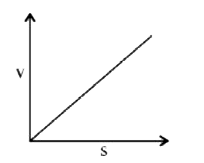 B
B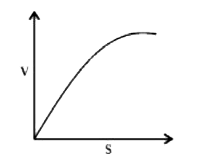 C
C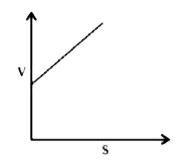 D
D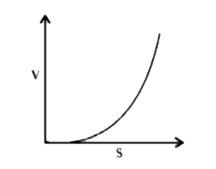
A particle of mass 0.3 kg subject to a force F=−kx with k=15N/m. What will be its initial acceleration if it is released from a point 20cm away from the origin?
A(a) 15m/s2B(b) 3m/s2C(c) 10m/s2D(d) 5m/s2A particle of mass m kept at the origin is subjected to a froce →F=(pt−qx)ˆi where t is the time elapsed and x is the x co-ordinate of the position of the particle. Particle starts its motion at t=0 with zero initial velocity. If p and q are positive constants, then:
AThe acceleration of the particle will continously keep on increasing with time.BParticle will execute simple harmonic motion.CThe force on the particle will have no upper limit.DThe acceleration of particle will very sinusoidally with time.
A particle of mass 2kg is moving in free space with velocity →v0=(2ˆi−3ˆj+ˆk)m/s is acted upon by force →F=(2ˆi+ˆj−2ˆk)N. Find velocity vector of the particle 3s after the force starts acting.
View SolutionA force (ˆi−2ˆj+3ˆk) acts on a particle lying at origin. What is the torque acting on the particle.
View SolutionA particie of mass 10 kg is driven by a machine that delivers a constant power of 20 watts. If particle starts from rest and moves along a straight line, then force (in Newton) on particle at time t(t>0) is
View SolutionA particle of mass m is subjected to a force →F=F0[cos(t)ˆi+sin(1)ˆj]. If initially (t=0) the particle was at rest, the kinetic energy of the particle as a function of time is given by:
View SolutionA particle starts moving from rest in a from rest in a straight line. Its acceleration vs time (a−t) graph is shown in figure. The speed of particle is maximum at.
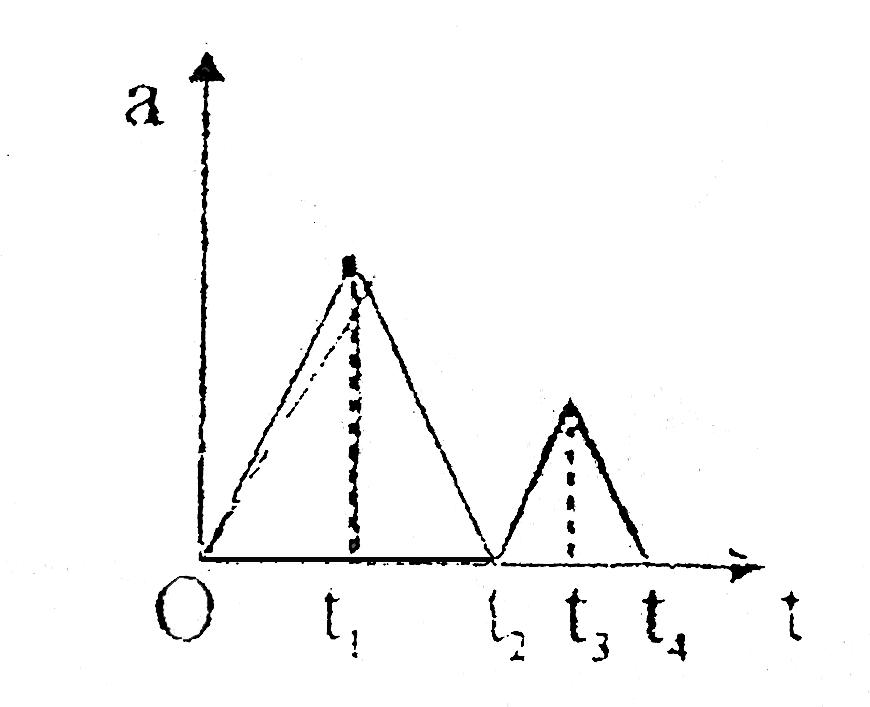
View Solution